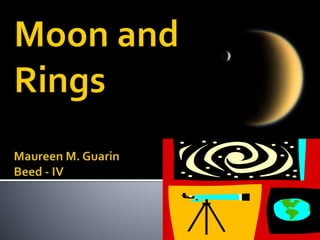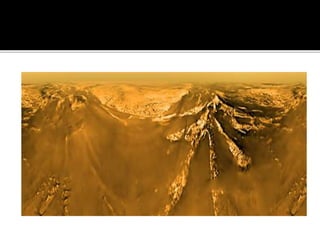- Saturn has the most extensive ring system in the solar system, consisting of ice and dust particles orbiting the planet. It has several moons within its rings.
- Titan is Saturn's largest moon, composed of ice and rock. It is the only known moon with a dense nitrogen-rich atmosphere and contains lakes of liquid methane and ethane.
- Cassini's radar images provided the first evidence of liquid on Titan's surface in the form of large lakes, suggesting weather patterns similar to Earth's.





















